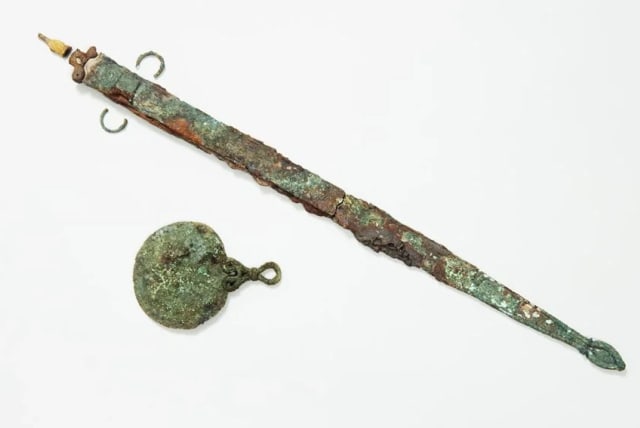2,000-year-old remains of Iron Age warrior found to be female

An archaeological study carried out by Historic England proved that battle items buried with ancient remains don't have to associate with just one gender.
Scientists have uncovered the hidden history of a 2,000-year-old grave on the Isles of Scilly in the United Kingdom. Now, researchers are looking for answers on what ancient warfare actually looked like during Britain's iron age.
A 1999 excavation revealed a burial ground surrounded by stones and containing ancient remains, though it was unclear of the gender of the deceased. However, items uncovered alongside the remains were able to provide insight into the story behind the ancient grave.
A recent scientific study revealed the hidden identity The body had both a copper sword and a shield, which were usually associated with men in the iron age, but also a brooch and a decorated bronze mirror. These other items were often deemed feminine and therefore associated with women.
So, how could one person be buried with items for battle and items for vanity? It became increasingly possible that these remains were not who researchers expected.
Scientific evidence was able to prove that not only were these the remains of a woman, but of a female warrior. This shed light on the existence of female warriors in a time when war and violence was commonplace.
Identifying the gender of the remains
The stage of disintegration of the remains made DNA analysis nearly impossible. However, they were able to establish the sex of the body thanks to pieces of bone and teeth. Similar to an ancient body uncovered in Spain, scientists tested tooth enamel to reveal the gender, proving that she was indeed a woman.
From the Department of environmental toxicology at UC Davis, Dr. Glendon Parker, closely associated with the study, acknowledged the important role of teeth in gender identification. “Tooth enamel is the hardest and most durable substance in the human body. It contains a protein with links to either the X or Y chromosome, which means it can be used to determine sex. This is useful because this protein survives well compared to DNA," he said.
He added, “Our analysis involved extracting traces of proteins from tiny pieces of the surviving tooth enamel. This allowed us to calculate a 96% probability that the individual was female.”
At the time, more than 2,000 years ago, groups likely carried out surprise attacks - raids - on enemy communities. The mirror may not have been associated with vanity, but potentially as crucial items and weapons for warfare.
The mirror, for instance, could have been used as a tool to signal movement and communicate ahead of attacks. They were also believed to have spiritual purposes, with the ability to "cleanse" warriors.
Historic England, the group responsible for the study, was able to provide support for the belief that women had a larger role in battle in ancient times.
“Although we can never know completely about the symbolism of objects found in graves, the combination of a sword and a mirror suggests this woman had high status within her community and may have played a commanding role in local warfare, organizing or leading raids on rival groups,” Dr. Sarah Stark, a human skeletal biologist at Historic England said.
She added, “This could suggest that female involvement in raiding and other types of violence was more common in iron age society than we’ve previously thought, and it could have laid the foundations from which leaders like Boudicca [the ancient British queen who in 60 CE led a revolt against Roman rule] would later emerge.”
Both the sword and mirror are available for viewing at the Isles of Scilly Museum.
Jerusalem Post Store
`; document.getElementById("linkPremium").innerHTML = cont; var divWithLink = document.getElementById("premium-link"); if (divWithLink !== null && divWithLink !== 'undefined') { divWithLink.style.border = "solid 1px #cb0f3e"; divWithLink.style.textAlign = "center"; divWithLink.style.marginBottom = "15px"; divWithLink.style.marginTop = "15px"; divWithLink.style.width = "100%"; divWithLink.style.backgroundColor = "#122952"; divWithLink.style.color = "#ffffff"; divWithLink.style.lineHeight = "1.5"; } } (function (v, i) { });

